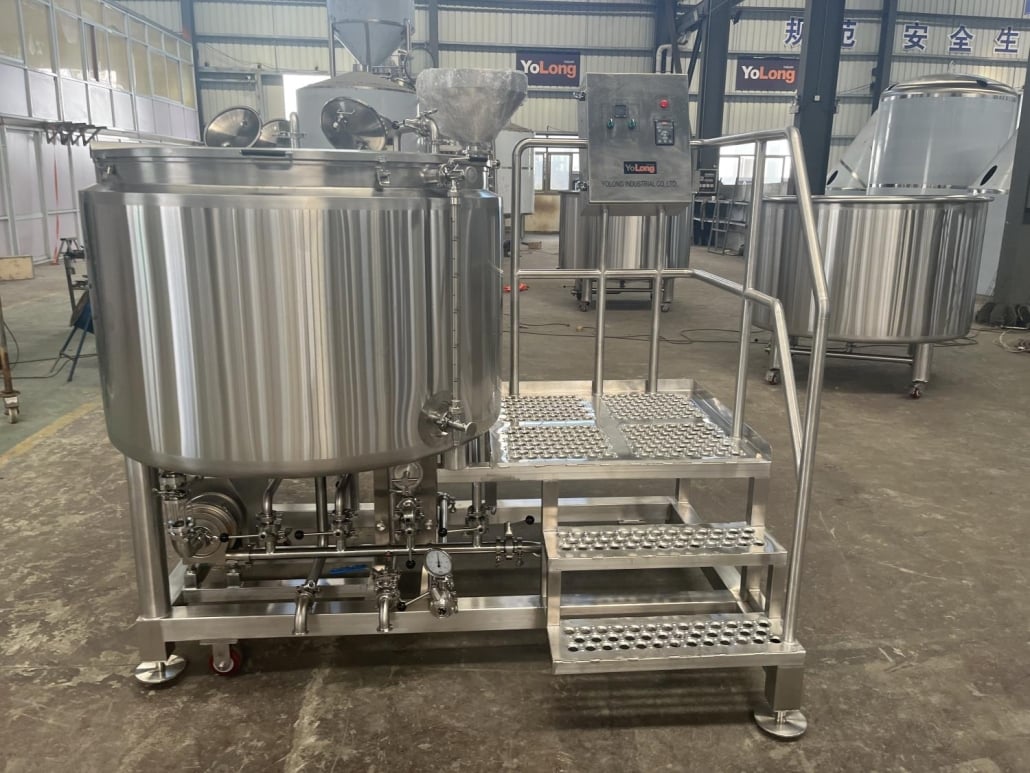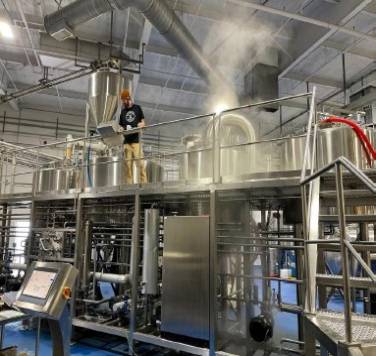Best Brewing Equipment
Introduction
For anyone passionate about brewing, having the right equipment is key. Whether you’re a homebrewer or a professional, selecting the best brewing equipment impacts the quality, efficiency, and consistency of your beer. With so many options available, finding equipment that suits your needs and budget can be overwhelming.
In this guide, we’ll cover everything you need to know about brewing equipment. From types of systems to capacity options, costs, and maintenance tips, we’ve got it all. Our goal is to help you make an informed decision, so you can craft high-quality beer with confidence. Ready to dive into the world of brewing equipment? Let’s get started!
Types of Brewing Equipment
This section explains the core equipment needed for each step in the brewing process. Detailed paragraphs will help you understand the purpose and functionality of each item. Here’s an overview:
1. Mash Tun
A mash tun is a vessel used to convert the starches in grains into fermentable sugars. This equipment comes in various capacities and is typically made of stainless steel or copper, ensuring durability and temperature stability.
2. Boil Kettle
After mashing, the wort (unfermented beer) is boiled in a kettle. This step sterilizes the wort and incorporates hops for flavor and aroma. Boil kettles can be simple or highly advanced, with options for temperature control and energy efficiency.
3. Fermentation Vessel
The fermentation vessel is where yeast transforms sugars into alcohol and carbon dioxide, turning wort into beer. These vessels vary from small carboys for home use to massive conical fermenters for commercial breweries, often equipped with temperature and pressure controls.
4. Wort Chiller
Wort chillers rapidly cool the wort after boiling, preventing contamination and preserving flavor. There are two main types: immersion and plate chillers, each with its pros and cons.
5. Bottling Equipment
This equipment is crucial for packaging your beer. For homebrewers, simple bottling wands work well, while commercial operations may use automated systems to fill bottles or cans at scale.

Brewing Equipment Guide
| Equipment Type | Purpose | Key Features | Ideal For |
|---|---|---|---|
| Mash Tun | Converts starches in grains to sugars | Insulated for temperature control, stainless steel | Home and Commercial Brewers |
| Boil Kettle | Boils wort, sterilizes, and adds hops | Range of sizes, temperature control, electric or gas | All Scales |
| Fermentation Vessel | Converts wort to beer via fermentation | Conical or carboy design, often with temperature control | Small and Large Breweries |
| Wort Chiller | Rapidly cools wort post-boil | Immersion or plate type, stainless steel for quick cooling | Homebrewers and Professionals |
| Bottling Equipment | Packages beer into bottles or cans | Manual to automated systems, sanitization features | Small- to Large-Scale Packaging |
Choosing the Right Brewing System
When selecting a brewing system, consider factors like your budget, batch size, and available space. Homebrewers often prefer smaller, user-friendly systems, while commercial brewers need larger setups with automation options.
1. Batch Size and Capacity
The size of your batches should guide your choice. Brewing systems for homebrewers typically range from 1 to 15 gallons, while commercial systems can produce hundreds of gallons per batch. Choose a system that aligns with your production goals.
| Brewing Scale | Batch Size | Recommended System Capacity |
|---|---|---|
| Homebrewing | 1-15 gallons | Compact, easy-to-store systems |
| Small Breweries | 15-100 gallons | Scalable systems with moderate customization |
| Large Breweries | 100+ gallons | High-capacity, customizable setups |
Brewing Process and Equipment Use
The brewing process includes mashing, boiling, fermenting, and packaging. Here’s a detailed look at how each phase works with the equipment involved:
Mashing Stage
In this step, the grains are mixed with hot water in the mash tun, converting starches to fermentable sugars. Insulated mash tuns with temperature control are ideal, as they maintain stable heat, ensuring consistent sugar conversion.
Boiling and Hop Addition
After mashing, the wort is transferred to the boil kettle. This stage involves heating the wort to sterilize it and adding hops for flavor. Electric kettles provide precise temperature control, while gas kettles offer quicker heat-up times.
Fermentation
Once the wort cools, it goes into the fermentation vessel. Yeast is added, starting the fermentation process, where sugars convert to alcohol. Conical fermenters are highly popular for their ease in separating yeast sediment from the beer.
Packaging and Bottling
The final step is bottling or canning the beer. Homebrewers may opt for manual bottling kits, while large-scale operations often use automated systems. Proper bottling equipment ensures consistent carbonation and sanitation.
Comparing Equipment Based on Design and Customization
Design features and customization options can affect brewing quality, ease of operation, and aesthetics. This table compares key elements for selecting equipment based on design, layout, and customization.
| Equipment Type | Design | Layout | Customization |
|---|---|---|---|
| Mash Tun | Insulated, durable | Compact or standalone | Size, heating options |
| Boil Kettle | Electric or gas | Can fit various setups | Capacity, temperature control |
| Fermentation Vessel | Conical or traditional carboy | Freestanding or stacked | Temperature/pressure control |
| Wort Chiller | Stainless steel, immersion | Easy to store | Type, length |
| Bottling Equipment | Manual or automated systems | Tabletop or freestanding | Speed, automation levels |
Top Brewing Equipment Suppliers and Price Range
When shopping for brewing equipment, you’ll find a wide range of suppliers. Prices vary by equipment type, size, and customization. Here’s an overview of popular suppliers and general price ranges for different types of brewing equipment.
| Supplier | Equipment Available | Price Range |
|---|---|---|
| Blichmann Engineering | Mash tuns, kettles, fermenters | $500 – $5,000 |
| Ss Brewtech | All-in-one brewing systems | $300 – $3,500 |
| Anvil Brewing | Wort chillers, brewing systems | $200 – $1,500 |
| Spike Brewing | Customized kettles and fermenters | $600 – $4,500 |
Installation, Operation, and Maintenance of Brewing Equipment
Proper installation and maintenance keep brewing equipment in top shape, reducing the risk of contamination and prolonging the lifespan of your setup.
| Aspect | Details |
|---|---|
| Installation | Requires careful assembly, proper sealing, and positioning |
| Operation | Follow manufacturer instructions for temperature and pressure settings |
| Maintenance | Regular cleaning and sanitization to prevent microbial contamination |
How to Choose a Supplier for Brewing Equipment
Choosing a reliable supplier involves researching their reputation, comparing prices, and checking for warranties or support options.
| Consideration | Details |
|---|---|
| Reputation | Look for reviews and customer testimonials |
| Pricing and Warranty | Compare costs, warranty coverage, and return policies |
| After-Sales Support | Choose suppliers with strong technical support for troubleshooting or repairs |

Pros and Cons of Various Brewing Equipment Types
| Equipment Type | Pros | Cons |
|---|---|---|
| Mash Tun | Good temperature control, durable | Can be bulky in smaller spaces |
| Boil Kettle | Precise heating, versatile | Expensive for large setups |
| Fermentation Vessel | Improved sediment separation, scalable | Larger vessels require careful cleaning |
| Wort Chiller | Quick cooling, maintains flavor | Plate chillers may clog with larger batches |
FAQ
| Question | Answer |
|---|---|
| What size mash tun is best for homebrewing? | A 5-10 gallon mash tun is ideal for most homebrewers. |
| Can I use a regular pot as a boil kettle? | Yes, but a dedicated boil kettle is better for temperature control. |
| How often should I clean my fermentation vessel? | Clean thoroughly after each batch to prevent contamination. |
| What’s the best wort chiller for homebrewing? | An immersion chiller is budget-friendly and efficient for smaller batches. |
Share this entry
Interested in learning more about Brewing Systems including additional details and pricing information? Please use the form below to contact us!
YOLONG BREWERY EQUIPMENT FAQS
- Commercial Brewery / Craft Brewery / Microbrewery / Nanobrewery
- What is The Difference Between Craft Beer and Industrial Beer?
- The Bespoke Differences In Custom Brewing Systems
- Everything You Need to Know About Kettle Souring
- How to Choose Brewing Equipment for Your business?
- How To Choose The-Best Partner To Build Your Commercial Microbrewing System?
- Two Detection Sensors That You Need To Use In Your Brewhouse System
- Remote Control Applications in Brewing Equipment/How does it work?
- How To Clean Your Brand New Brewery Tanks?

